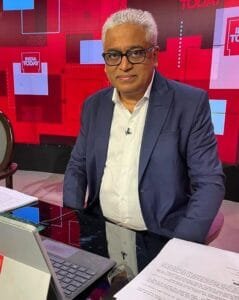
Top 10 Bollywood Actors
Top 10 Bollywood Actors in 2025
1. Allu Arjun – around ₹300 crore per film

2. Joseph Vijay – ₹130–₹275 crore

3. Shah Rukh Khan – ₹150–₹250 crore

4. Rajinikanth – ₹125–₹270 crore

5. Aamir Khan – ₹100–₹275 crore

6. Prabhas – ₹100–₹200 crore

7. Ajith Kumar – ₹105–₹165 crore

8. Salman Khan – ₹100–₹150 crore

9. Kamal Haasan – ₹100–₹150 crore

10. Akshay Kumar – ₹60–₹145 crore

Bollywood Actors and Their Fees: The Business Behind the Stardom
Bollywood, India’s vibrant and globally recognized film industry, is not just about glitz and glamour — it is also a massive commercial enterprise. Central to this ecosystem are Bollywood actors whose faces, charisma, and talent often determine the fate of films at the box office. Among them, Shah Rukh Khan, often hailed as the “King of Bollywood,” stands out not only for his unparalleled stardom but also for the magnitude of his earnings.
Let’s take a deep dive into how top Bollywood actors earn, what determines their fees, and why the economics of stardom are evolving — with special attention to Shah Rukh Khan and his contemporaries.
Shah Rukh Khan: The Brand and the Billionaire
Shah Rukh Khan, often referred to by his initials SRK, is arguably the most iconic Bollywood actor of all time. With a career spanning over three decades, he has delivered blockbusters like Dilwale Dulhania Le Jayenge, My Name is Khan, Chennai Express, and Pathaan. His immense popularity transcends India, making him one of the most recognizable faces globally.
SRK’s Fees: From Crores to Percentages
As of 2025, Shah Rukh Khan reportedly charges between ₹150 crore to ₹250 crore per film, depending on his involvement in production and profit-sharing agreements. Unlike many actors who demand fixed fees, SRK often opts for a profit participation model, where he takes a lower upfront fee in exchange for a share in the film’s earnings, merchandising, digital rights, and satellite deals.
For instance, for Jawan and Pathaan, industry insiders suggest that while his base fee was under ₹100 crore, he eventually took home well over ₹200 crore once all revenues were counted — a strategic move that aligns risk with reward.
SRK is not just an actor; he is a brand. From brand endorsements (worth ₹10–₹20 crore each) to owning Red Chillies Entertainment (a major production and VFX house), to part-ownership of the Kolkata Knight Riders IPL team, his income sources are diverse.
The Top League: Other High-Paid Actors
While Shah Rukh Khan is arguably the highest-paid in Bollywood today, he shares the upper echelons of stardom with several other megastars. Here’s a quick look at the top earners and what they typically charge:
1. Aamir Khan – ₹100–275 Crore
A perfectionist with limited film releases, Aamir Khan also follows the profit-sharing model. He reportedly earned over ₹250 crore from Dangal through backend deals, despite charging no fee initially.
2. Salman Khan – ₹100–150 Crore
A bankable star with a massive fan base, Salman usually commands a flat fee. He also has long-term deals with studios like YRF and Zee for multi-film packages.
3. Akshay Kumar – ₹60–145 Crore
Known for his prolific output (4–5 films a year), Akshay commands high fees per film, often exceeding ₹100 crore, especially when he also serves as co-producer.
4. Ranbir Kapoor – ₹70–90 Crore
Ranbir, with hits like Animal and Sanju, is among the younger high earners, charging over ₹70 crore for major productions.
5. Ranveer Singh – ₹50–80 Crore
With his energetic screen presence, Ranveer is a brand darling and a bankable star. His fees have risen significantly post-Gully Boy and 83.
The Rise of Pan-India Actors and Fee Inflation
In recent years, South Indian actors have disrupted Bollywood’s dominance by delivering massive pan-India hits. This has also influenced the fee structures across industries.
– Allu Arjun – ₹300 Crore
Post-Pushpa, Allu Arjun reportedly became the highest-paid Indian actor, charging up to ₹300 crore for Pushpa 2 — a sign of changing power dynamics.
– Prabhas, Vijay, Rajinikanth
These stars charge between ₹150 to ₹250 crore, thanks to their massive fanbases across India and abroad.
Bollywood actors are now competing with their South Indian counterparts, not just in box office clout but in remuneration.
Why Are Actor Fees So High?
Several factors determine how much an actor can demand:
1. Box Office Value
A star who guarantees a ₹200+ crore opening weekend can demand more because producers see them as a safe investment.
2. OTT and Satellite Rights
Films today earn substantial revenue from streaming platforms (like Netflix, Amazon Prime) and satellite rights. An actor like Shah Rukh Khan can influence how much these rights are sold for — which justifies a higher fee.
3. Brand Value
Actors with high visibility attract brand endorsements, partnerships, and ancillary revenues. SRK, for example, endorses multiple global brands, including luxury watches, hygiene products, and fintech apps.
4. Global Appeal
Actors like SRK have massive fanbases in countries like UAE, UK, Germany, and Indonesia. This makes their films attractive for overseas distributors and global OTT platforms.
How Actors’ Fees Impact Filmmaking
The rise in actor salaries has led to higher production budgets. While a ₹250 crore fee may be justifiable for a ₹1000 crore-grossing film, it’s risky for mid-budget or content-driven cinema.
Producers now often tie actors’ fees to box office milestones or use revenue-sharing models. For example, a film may offer an actor ₹50 crore upfront and 30% of net profits post-break-even.
This helps de-risk the investment and motivates actors to promote the film actively — something Shah Rukh Khan excels at.
Controversies Around High Actor Fees
There has been criticism within the industry regarding escalating actor fees. Some filmmakers argue that these fees are unsustainable and reduce budgets for storytelling, VFX, and marketing.
Veteran filmmakers like Anurag Kashyap and actors like Nawazuddin Siddiqui have openly criticized “fee inflation,” suggesting that actors should share the risks rather than demand fixed payments upfront.
However, others argue that top stars deserve their paychecks because they’re the ones filling theatres and generating pre-release buzz.
The Future of Actor Compensation
The future may see a greater shift toward performance-based compensation, especially in an era dominated by digital metrics. OTT platforms now track audience retention, completion rates, and engagement — allowing studios to tie payments to actual viewer impact.
Additionally, with increasing co-productions and cross-industry collaborations, more stars (like Shah Rukh Khan or Allu Arjun) may continue to diversify their revenue through production houses, IP rights, and even international co-financing.
Conclusion: Beyond the Crores
Actor fees in Bollywood have come a long way. From the days when ₹1 crore was considered enormous to today’s ₹250–300 crore payouts, the film industry reflects India’s growing economic and cultural footprint.
Shah Rukh Khan epitomizes this evolution. From a TV actor in the late 80s to becoming one of the world’s wealthiest entertainers, SRK’s journey mirrors the rise of Bollywood itself.
While his fees are high, they are often justified by his pan-India and global appeal, business acumen, and box office draw. As Bollywood continues to evolve, the star power — and price tag — of actors like Shah Rukh Khan will remain central to the narrative.






